Blog
Our Top Blog Posts
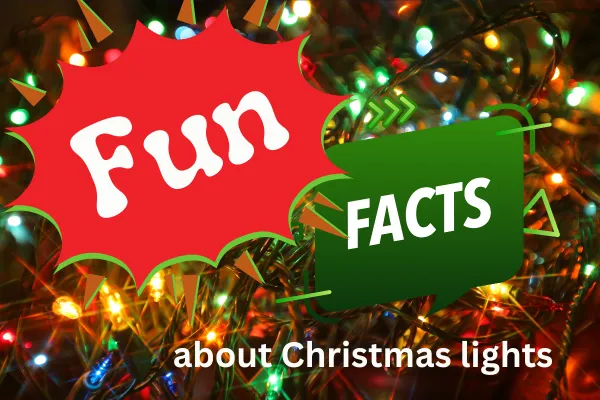
Fun Facts about Christmas Lights!
Christmas lights are a staple of the holiday season. They add a magical glow to homes and neighborhoods, spreading cheer and joy. But where did the tradition originate? And how did Christmas lights become the ubiquitous decoration they are today? Here's an in-depth look at the captivating history and little-known facts behind Christmas lights.
Thomas Edison and Edward Johnson Ushered in Electric Christmas Lights
The first electric Christmas lights were invented by none other than the legendary Thomas Edison. In 1882, Edward H. Johnson, one of Edison’s colleagues, came up with the idea of using electric lights to decorate a Christmas tree. He hung red, white, and blue light bulbs around a Christmas tree in Edison’s laboratory in New York City. The public loved this festive display of lights. By the early 1900s, department stores began using Christmas lights in their holiday displays.

The First White House Christmas Tree Was Illuminated in 1894
In 1894, President Grover Cleveland commissioned electrician Edward Johnson (the same man who decorated the first electric Christmas tree) to decorate a Christmas tree in the White House. Over 100 multicolored light bulbs were used on the tree, which was placed on the South Lawn. This was the first time electric lights were used to decorate the White House for Christmas. Since then, putting up a national Christmas tree on the White House grounds has become an annual tradition.
Early Christmas Lights Were Dangerous and Expensive
While wonderfully festive, early Christmas light sets were expensive, intricate affairs. Each light bulb had to be hand-wired and screwed into its socket by hand. The delicate glass bulbs were prone to breaking and the open flames used to generate electricity posed a serious fire hazard. Wealthier Americans were the only ones who could afford these early decorated trees. Over time, the technology improved, allowing Christmas lights to become more affordable for the average family.

NOMA Launched Popular Plug-In Light Sets in the 1920s
In the 1920s, Albert Sadacca’s NOMA Electric Company greatly changed Christmas lighting history. NOMA (National Outfit Manufacturer’s Association) created the very first Christmas light strands that could be plugged into a standard wall outlet rather than hardwired to a cumbersome generator. They used small Italian bulbs and rubber-coated wires that were much safer. NOMA’s plug-and-play light sets became very popular in the 1930s and beyond.
NOMA’s popular plug-and-play light strands revolutionized Christmas decorations in the 1920s. Their sets were of such high quality that NOMA came to dominate 75% of the Christmas light market by the 1930s. Competitors and government officials claimed NOMA had created a monopoly, however, and brought an antitrust lawsuit against them in 1941. NOMA defended their market dominance, counter-suing for libel. After a lengthy legal battle, the Supreme Court ultimately dismissed the case in 1952, allowing NOMA’s reign to continue.
Large Public Light Displays Became Popular in the 1950s
In addition to decorating homes, the 1950s ushered in the era of extravagant public Christmas light displays. Department stores and cities hosted elaborate lighting ceremonies, adorning buildings with thousands of twinkling bulbs. Some cities held annual Christmas decoration contests for public streets as a point of civic pride. Even public zoos got in on the trend, stringing colorful lights around animal enclosures. The dazzling light displays delighted viewers and became a holiday tradition.
Though they wholeheartedly embrace all manners of Christmas decor today, early American department stores actually refused to decorate for the holiday. They didn’t want to appear partial to Christians only, so holiday themes were avoided in the late 1800s. But around the turn of the 20th century, some stores began showcasing festive Christmas scenes and lighting displays in their windows, to the great delight of holiday shoppers.
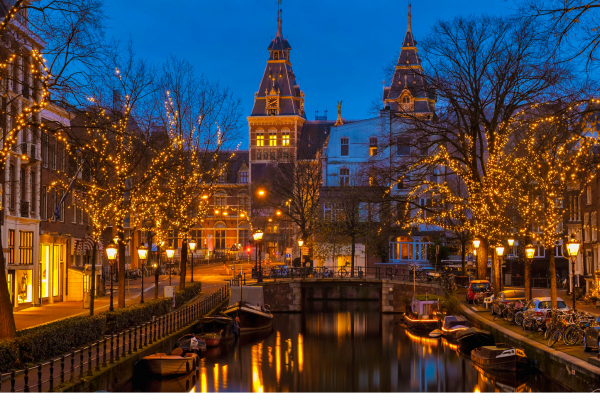
Different Colors Convey Distinct Holiday Meanings
Christmas lights come in a rainbow of colors today, though certain hues are more traditional. As lighting technology improved, different colors gained distinct holiday symbolism:
* Red represents the blood of Christ
* Green symbolizes eternal life
* Blue lights recall the blue blanket Baby Jesus was wrapped in
* White gives a peaceful glow, representing angels and purity
* Yellow echoes the light from candles and fireplaces
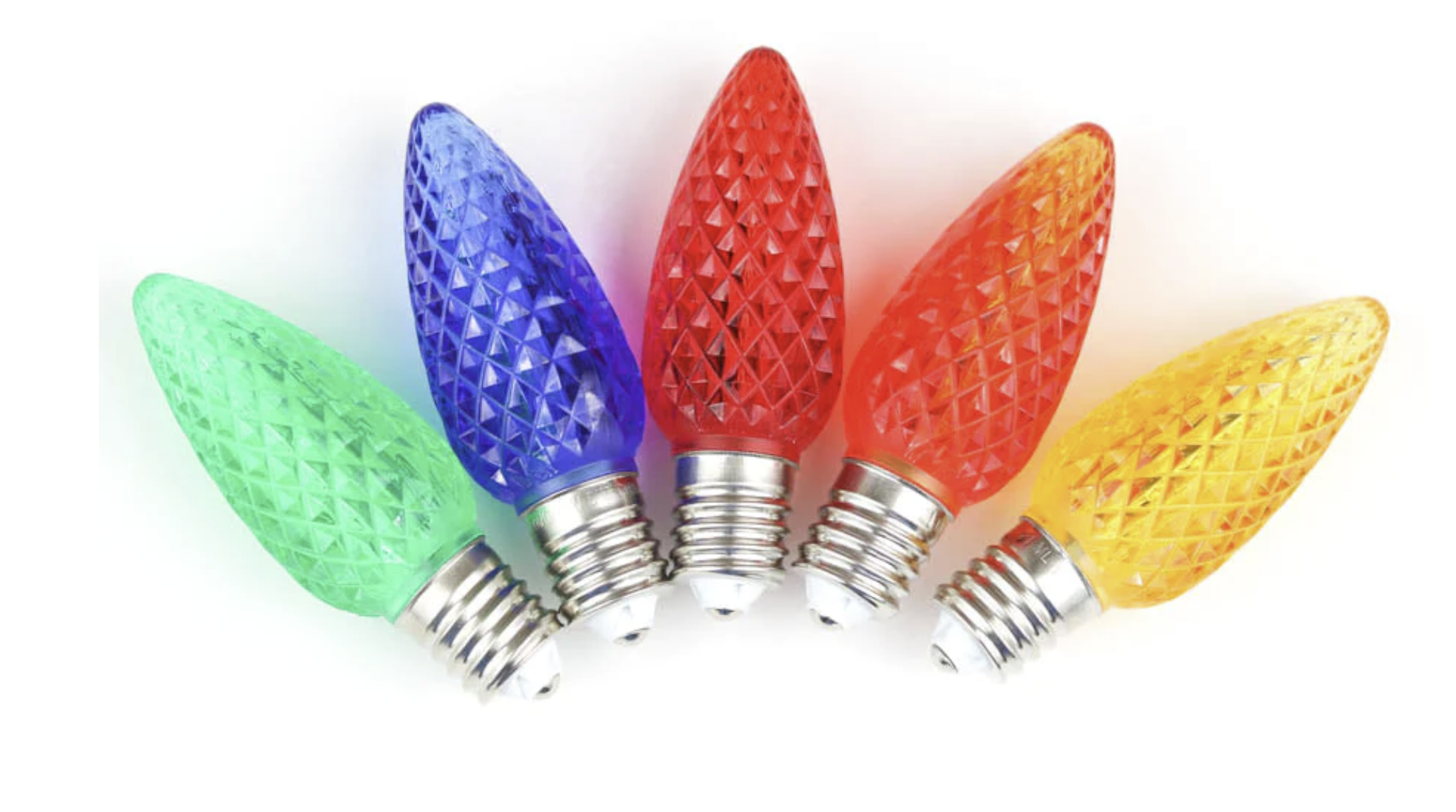
Guinness World Records for Christmas Lights
From single trees wrapped in a half million lights to a light strand spanning over 200 miles, Christmas enthusiasts have set some extreme world records when it comes to holiday decorations. Here are some of the most remarkable Guinness World Records related to Christmas lights:
* Most Lights on a Christmas Tree (Single Tree): 502,165 bulbs (Lebanon, 2019)
* Most LED Lights on a Christmas Tree (Single Tree): 710,405 LEDs (United States, 2020)
* Largest Christmas Light Maze - 12,741 square feet (Macau, 2017)
* Largest Image Made of Christmas Lights: 197,080 bulbs depicting Van Gogh's 'Starry Night' painting (United Arab Emirates, 2014)
*The most lights on a residential property goes to the Richards family in Australia, who decorated their home with over 500,000 lights.
Early Outdoor Light Displays Used Massive Candles
Long before the invention of electric Christmas lights, people decorated outdoors for Christmas using candles. However, these were no ordinary candles. In the mid 1800s, specially-made “Christmas candles” over three feet tall were anchored outside churches, town halls, and homes. Christmas Eve candlelight processions became a customary tradition. Though elaborate and beautiful, the fire hazard prompted many cities to later ban outdoor candle displays.
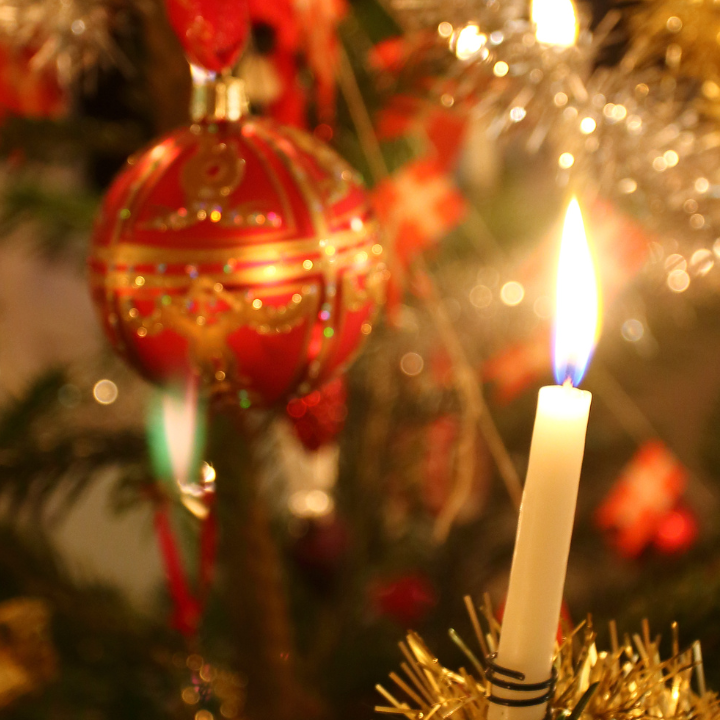
Candles on Trees: The tradition of lighting up Christmas began in the 16th century in Germany. People used candles to decorate Christmas trees, symbolizing Christ as the light of the world. These candles, affixed to tree branches with melted wax or pins, presented a fire hazard, leading to the search for safer alternatives.
Early Outdoor Trees Were Illuminated by Actual Fires
One of the earliest methods of decorating outdoor trees involved lighting actual fires within them! People would build wooden structures inside the tree to hold candles or torches, then light them at night. The flames glowing through the branches produced a beautiful effect. However, it wasn't the safest method. Lighting the trees on fire became such an issue that many cities banned the practice. But the tradition continued in rural areas into the early 20th century before electric lights took over.
Unique Traditions Around the World
In countries like Sweden, the tradition of Saint Lucia brings light into the darkest time of the year with candlelit processions on December 13th. Meanwhile, in the Philippines, the Parol (star lantern) represents the guiding light of the Bethlehem star, illuminating homes and streets. In Europe, the transition from candles to fairy lights in Christmas decorations reflected advancements in safety and technology. Countries like Germany and the UK were pioneers in adopting electric lights for Christmas, blending tradition with innovation.
Technological Evolution and Trends
From Incandescent to LED: The evolution of Christmas lights from incandescent bulbs to LED technology reflects a shift towards energy efficiency and environmental consciousness. LED lights consume up to 90% less energy and have a longer lifespan.
Smart Christmas Lights: Today, technology allows for Christmas lights to be controlled via smartphone apps, enabling users to change colors, patterns, and timing with ease. This innovation adds a personalized touch to holiday decorations.
Solar-Powered Lights: Embracing sustainability, solar-powered Christmas lights have gained popularity. These lights charge during the day and illuminate at night without the need for electrical outlets, reducing energy consumption.
Innovation in Design: The design of Christmas lights continues to evolve, with shapes ranging from traditional bulbs to intricate figures of snowflakes, stars, and even characters from popular culture, allowing for personalized expressions of holiday cheer.
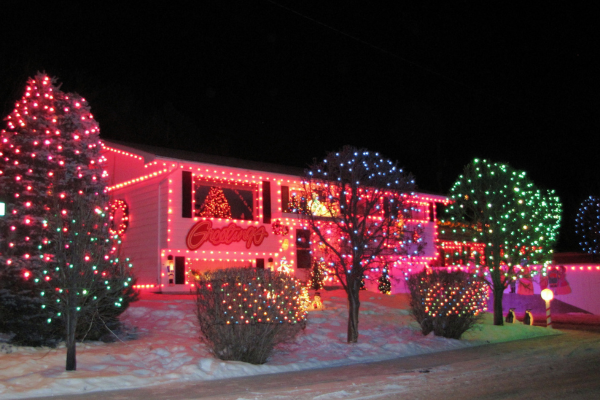
More Fun Facts and Quirky Traditions
Christmas Light Battles: In some neighborhoods, decorating homes with Christmas lights becomes a friendly competition, with residents trying to outdo each other in creativity and splendor.
Economic Impact: The production and sale of Christmas lights significantly impact the economy, with millions of sets sold annually worldwide. This demand supports a thriving industry dedicated to holiday decorations.
Recycling Old Lights: Many organizations and companies offer recycling programs for old Christmas lights, promoting environmental responsibility by salvaging and reusing materials.
Candy Cane Lane: In various parts of the world, entire streets or neighborhoods collaborate to create themed light displays, such as the famous Candy Cane Lane, where homes are decorated to resemble a winter wonderland.
For more interesting information on the history of Christmas Lights, see our blog post: From Candle Glow to LED Show: The Evolution of Christmas Tree Illumination.
The Light of Community and Celebration
Lighting Ceremonies: Many communities host annual lighting ceremonies where the switch-on of Christmas lights marks the official start of the holiday season, fostering a sense of community and shared joy.
Lights of Hope and Unity: Beyond decoration, Christmas lights symbolize hope, unity, and the enduring human spirit. During challenging times, the simple act of lighting up a home or community can uplift spirits and bring people together.
Cultural Adaptations: As cultures blend, Christmas lights have found a place in non-Christian celebrations, highlighting the universal appeal of light as a symbol of peace and goodwill.
For more fascinating facts about the history of Christmas Lights, see our blog post: From Candle Glow to LED Show: The Evolution of Christmas Tree Illumination.
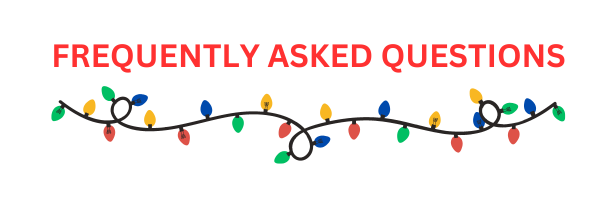
FAQ 1: Who invented the first electric Christmas lights?
The first electric Christmas lights were invented in 1882 by Thomas Edison's colleague Edward H. Johnson. He strung up multi-colored light bulbs around a Christmas tree in Edison's New York City laboratory.
FAQ 2: When were Christmas lights first used to decorate the White House?
President Grover Cleveland commissioned electric Christmas lights to decorate a White House Christmas tree in 1894. Over 100 colored light bulbs were used on the outdoor tree, which was placed on the South Lawn.
FAQ 3: How did NOMA change Christmas lights in the 1920s?
NOMA Electric Company revolutionized Christmas lights by creating the first string light sets that could simply be plugged into an electrical outlet in the 1920s. This made lighting trees much safer and easier compared to complicated hardwired light strings.
FAQ 4: What are some record-setting Christmas light displays?
Some record-holding Christmas light displays and decorations include the most lights on a single tree (over 700,000), the largest light maze (over 12,000 square feet), and the longest strand of Christmas lights (over 200 miles).
FAQ 5: Why did early department stores avoid Christmas decorations?
In the late 1800s, department stores shunned Christmas themes and decorations. They didn't want to appear biased towards Christians only. But around 1900, some stores began showcasing festive window displays and light displays after all, to shoppers' delight.


Fun Facts about Christmas Lights!
Christmas lights are a staple of the holiday season. They add a magical glow to homes and neighborhoods, spreading cheer and joy. But where did the tradition originate? And how did Christmas lights become the ubiquitous decoration they are today? Here's an in-depth look at the captivating history and little-known facts behind Christmas lights.
Thomas Edison and Edward Johnson Ushered in Electric Christmas Lights
The first electric Christmas lights were invented by none other than the legendary Thomas Edison. In 1882, Edward H. Johnson, one of Edison’s colleagues, came up with the idea of using electric lights to decorate a Christmas tree. He hung red, white, and blue light bulbs around a Christmas tree in Edison’s laboratory in New York City. The public loved this festive display of lights. By the early 1900s, department stores began using Christmas lights in their holiday displays.

The First White House Christmas Tree Was Illuminated in 1894
In 1894, President Grover Cleveland commissioned electrician Edward Johnson (the same man who decorated the first electric Christmas tree) to decorate a Christmas tree in the White House. Over 100 multicolored light bulbs were used on the tree, which was placed on the South Lawn. This was the first time electric lights were used to decorate the White House for Christmas. Since then, putting up a national Christmas tree on the White House grounds has become an annual tradition.
Early Christmas Lights Were Dangerous and Expensive
While wonderfully festive, early Christmas light sets were expensive, intricate affairs. Each light bulb had to be hand-wired and screwed into its socket by hand. The delicate glass bulbs were prone to breaking and the open flames used to generate electricity posed a serious fire hazard. Wealthier Americans were the only ones who could afford these early decorated trees. Over time, the technology improved, allowing Christmas lights to become more affordable for the average family.

NOMA Launched Popular Plug-In Light Sets in the 1920s
In the 1920s, Albert Sadacca’s NOMA Electric Company greatly changed Christmas lighting history. NOMA (National Outfit Manufacturer’s Association) created the very first Christmas light strands that could be plugged into a standard wall outlet rather than hardwired to a cumbersome generator. They used small Italian bulbs and rubber-coated wires that were much safer. NOMA’s plug-and-play light sets became very popular in the 1930s and beyond.
NOMA’s popular plug-and-play light strands revolutionized Christmas decorations in the 1920s. Their sets were of such high quality that NOMA came to dominate 75% of the Christmas light market by the 1930s. Competitors and government officials claimed NOMA had created a monopoly, however, and brought an antitrust lawsuit against them in 1941. NOMA defended their market dominance, counter-suing for libel. After a lengthy legal battle, the Supreme Court ultimately dismissed the case in 1952, allowing NOMA’s reign to continue.
Large Public Light Displays Became Popular in the 1950s
In addition to decorating homes, the 1950s ushered in the era of extravagant public Christmas light displays. Department stores and cities hosted elaborate lighting ceremonies, adorning buildings with thousands of twinkling bulbs. Some cities held annual Christmas decoration contests for public streets as a point of civic pride. Even public zoos got in on the trend, stringing colorful lights around animal enclosures. The dazzling light displays delighted viewers and became a holiday tradition.
Though they wholeheartedly embrace all manners of Christmas decor today, early American department stores actually refused to decorate for the holiday. They didn’t want to appear partial to Christians only, so holiday themes were avoided in the late 1800s. But around the turn of the 20th century, some stores began showcasing festive Christmas scenes and lighting displays in their windows, to the great delight of holiday shoppers.

Different Colors Convey Distinct Holiday Meanings
Christmas lights come in a rainbow of colors today, though certain hues are more traditional. As lighting technology improved, different colors gained distinct holiday symbolism:
* Red represents the blood of Christ
* Green symbolizes eternal life
* Blue lights recall the blue blanket Baby Jesus was wrapped in
* White gives a peaceful glow, representing angels and purity
* Yellow echoes the light from candles and fireplaces

Guinness World Records for Christmas Lights
From single trees wrapped in a half million lights to a light strand spanning over 200 miles, Christmas enthusiasts have set some extreme world records when it comes to holiday decorations. Here are some of the most remarkable Guinness World Records related to Christmas lights:
* Most Lights on a Christmas Tree (Single Tree): 502,165 bulbs (Lebanon, 2019)
* Most LED Lights on a Christmas Tree (Single Tree): 710,405 LEDs (United States, 2020)
* Largest Christmas Light Maze - 12,741 square feet (Macau, 2017)
* Largest Image Made of Christmas Lights: 197,080 bulbs depicting Van Gogh's 'Starry Night' painting (United Arab Emirates, 2014)
*The most lights on a residential property goes to the Richards family in Australia, who decorated their home with over 500,000 lights.
Early Outdoor Light Displays Used Massive Candles
Long before the invention of electric Christmas lights, people decorated outdoors for Christmas using candles. However, these were no ordinary candles. In the mid 1800s, specially-made “Christmas candles” over three feet tall were anchored outside churches, town halls, and homes. Christmas Eve candlelight processions became a customary tradition. Though elaborate and beautiful, the fire hazard prompted many cities to later ban outdoor candle displays.

Candles on Trees: The tradition of lighting up Christmas began in the 16th century in Germany. People used candles to decorate Christmas trees, symbolizing Christ as the light of the world. These candles, affixed to tree branches with melted wax or pins, presented a fire hazard, leading to the search for safer alternatives.
Early Outdoor Trees Were Illuminated by Actual Fires
One of the earliest methods of decorating outdoor trees involved lighting actual fires within them! People would build wooden structures inside the tree to hold candles or torches, then light them at night. The flames glowing through the branches produced a beautiful effect. However, it wasn't the safest method. Lighting the trees on fire became such an issue that many cities banned the practice. But the tradition continued in rural areas into the early 20th century before electric lights took over.
Unique Traditions Around the World
In countries like Sweden, the tradition of Saint Lucia brings light into the darkest time of the year with candlelit processions on December 13th. Meanwhile, in the Philippines, the Parol (star lantern) represents the guiding light of the Bethlehem star, illuminating homes and streets. In Europe, the transition from candles to fairy lights in Christmas decorations reflected advancements in safety and technology. Countries like Germany and the UK were pioneers in adopting electric lights for Christmas, blending tradition with innovation.
Technological Evolution and Trends
From Incandescent to LED: The evolution of Christmas lights from incandescent bulbs to LED technology reflects a shift towards energy efficiency and environmental consciousness. LED lights consume up to 90% less energy and have a longer lifespan.
Smart Christmas Lights: Today, technology allows for Christmas lights to be controlled via smartphone apps, enabling users to change colors, patterns, and timing with ease. This innovation adds a personalized touch to holiday decorations.
Solar-Powered Lights: Embracing sustainability, solar-powered Christmas lights have gained popularity. These lights charge during the day and illuminate at night without the need for electrical outlets, reducing energy consumption.
Innovation in Design: The design of Christmas lights continues to evolve, with shapes ranging from traditional bulbs to intricate figures of snowflakes, stars, and even characters from popular culture, allowing for personalized expressions of holiday cheer.

More Fun Facts and Quirky Traditions
Christmas Light Battles: In some neighborhoods, decorating homes with Christmas lights becomes a friendly competition, with residents trying to outdo each other in creativity and splendor.
Economic Impact: The production and sale of Christmas lights significantly impact the economy, with millions of sets sold annually worldwide. This demand supports a thriving industry dedicated to holiday decorations.
Recycling Old Lights: Many organizations and companies offer recycling programs for old Christmas lights, promoting environmental responsibility by salvaging and reusing materials.
Candy Cane Lane: In various parts of the world, entire streets or neighborhoods collaborate to create themed light displays, such as the famous Candy Cane Lane, where homes are decorated to resemble a winter wonderland.
For more interesting information on the history of Christmas Lights, see our blog post: From Candle Glow to LED Show: The Evolution of Christmas Tree Illumination.
The Light of Community and Celebration
Lighting Ceremonies: Many communities host annual lighting ceremonies where the switch-on of Christmas lights marks the official start of the holiday season, fostering a sense of community and shared joy.
Lights of Hope and Unity: Beyond decoration, Christmas lights symbolize hope, unity, and the enduring human spirit. During challenging times, the simple act of lighting up a home or community can uplift spirits and bring people together.
Cultural Adaptations: As cultures blend, Christmas lights have found a place in non-Christian celebrations, highlighting the universal appeal of light as a symbol of peace and goodwill.
For more fascinating facts about the history of Christmas Lights, see our blog post: From Candle Glow to LED Show: The Evolution of Christmas Tree Illumination.

FAQ 1: Who invented the first electric Christmas lights?
The first electric Christmas lights were invented in 1882 by Thomas Edison's colleague Edward H. Johnson. He strung up multi-colored light bulbs around a Christmas tree in Edison's New York City laboratory.
FAQ 2: When were Christmas lights first used to decorate the White House?
President Grover Cleveland commissioned electric Christmas lights to decorate a White House Christmas tree in 1894. Over 100 colored light bulbs were used on the outdoor tree, which was placed on the South Lawn.
FAQ 3: How did NOMA change Christmas lights in the 1920s?
NOMA Electric Company revolutionized Christmas lights by creating the first string light sets that could simply be plugged into an electrical outlet in the 1920s. This made lighting trees much safer and easier compared to complicated hardwired light strings.
FAQ 4: What are some record-setting Christmas light displays?
Some record-holding Christmas light displays and decorations include the most lights on a single tree (over 700,000), the largest light maze (over 12,000 square feet), and the longest strand of Christmas lights (over 200 miles).
FAQ 5: Why did early department stores avoid Christmas decorations?
In the late 1800s, department stores shunned Christmas themes and decorations. They didn't want to appear biased towards Christians only. But around 1900, some stores began showcasing festive window displays and light displays after all, to shoppers' delight.

Copyright ©2025 All Right Reserved website designed by christmaslights.io
Terms of Service / Privacy Policy
Have questions or need assistance?
Contact us at (855)619-LITE


